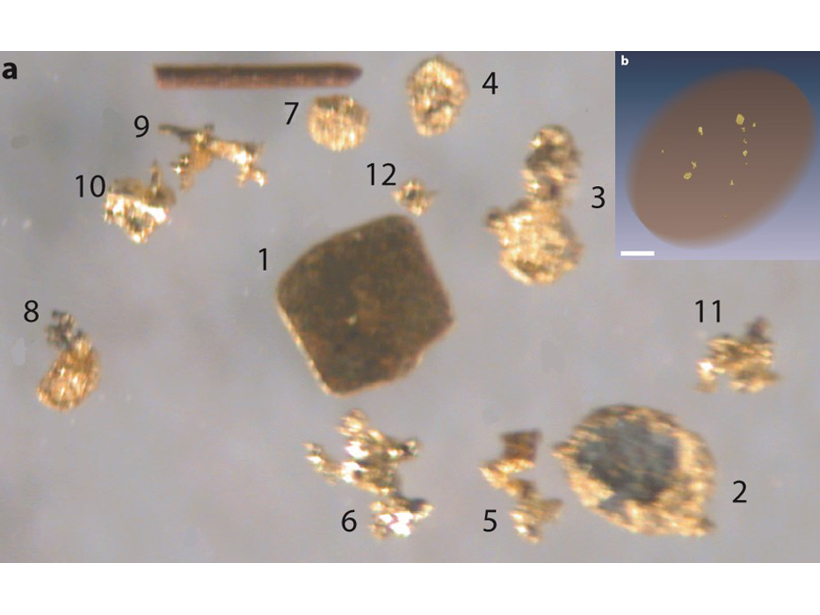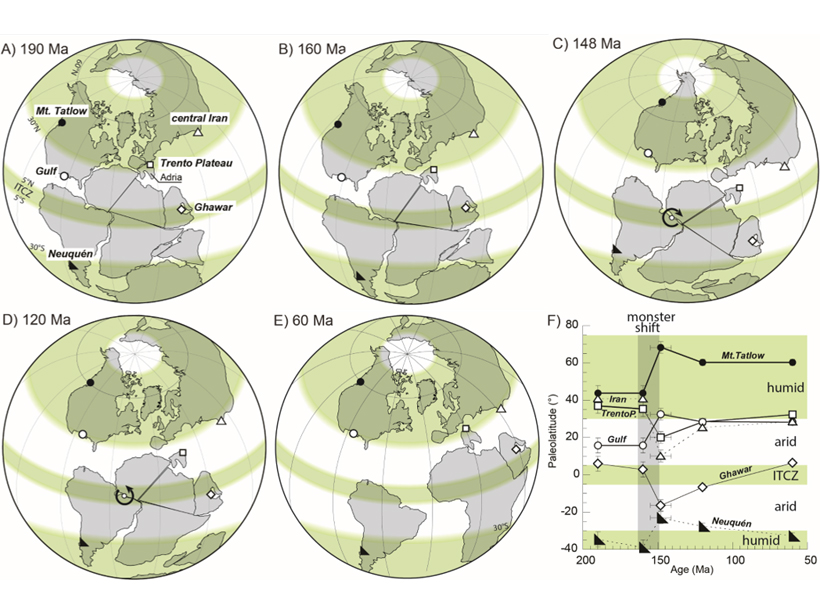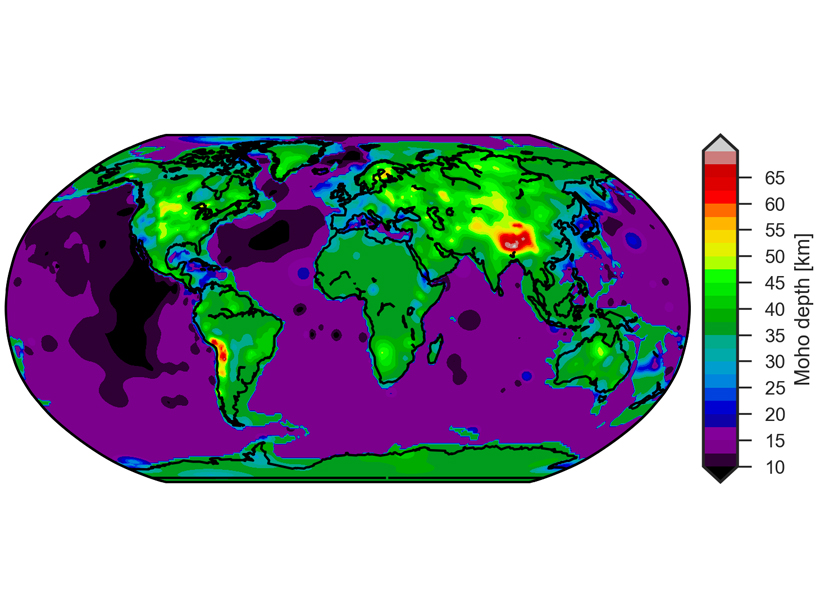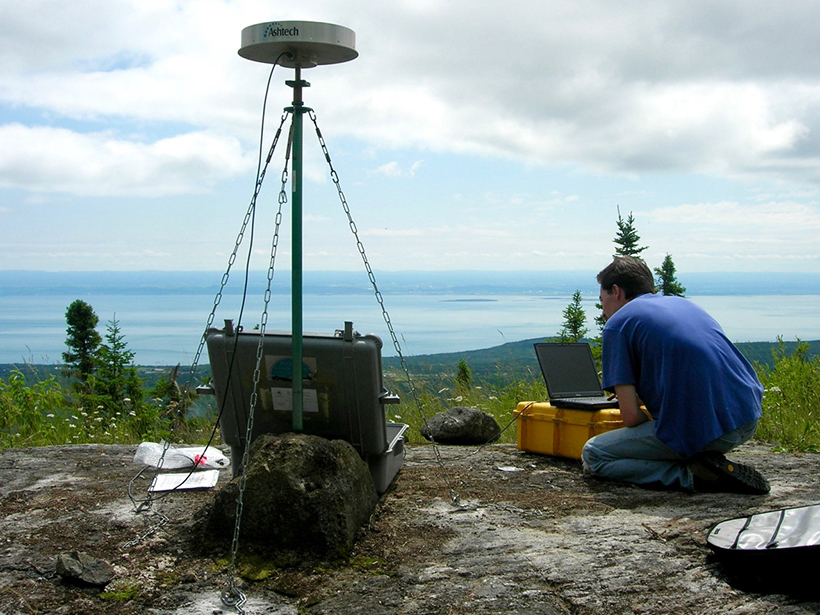A unique geodetic data set from Japan’s Nankai subduction zone offers an unparalleled opportunity to study surface deformation spanning almost an entire seismic cycle.
Journal of Geophysical Research: Solid Earth
X-Ray Computed Tomography Detects Resolution Scale Gold Grains
A method combining partial-volume and blurring effects can be used to measure small features in computed tomography data volumes.
A New Way of Visualizing Iceland’s Crustal Deformation
A novel method of calculating strain rates from GPS data shows the South Iceland Seismic Zone is experiencing rapid deformation, including inflation near the island’s most active volcano.
All Types of Large Earthquakes Produce Prompt Gravity Signals
New observations of recently discovered gravity perturbations that precede seismic waves have the potential to improve earthquake early-warning systems in California and other tectonic settings.
Extraordinary Polar Wander During the Late Jurassic?
Small amounts of polar wander have occurred during geological history, but whether larger amounts occurred is still controversial. Did a truly large polar wander event really happen?
New Global Crustal Model Built as Foundation for Future Studies
A new global crustal model and its corresponding uncertainty were obtained using minimum a priori information and a geostatistical approach.
Seismic Anisotropy Due to a Compositionally Layered Mantle
Investigating the role of layered rocks and compositional banding on mineral scale in generating seismic anisotropy in the mantle.
Observing Volcanoes from Space
The first multidecadal, satellite-based study of Latin America’s most active volcanoes could help researchers better predict eruptions.
Real Time Probing of Shale Cracks in Double Torsion Experiments
Imaging crack propagation in shales using twin optical cameras and fast X-ray radiograph acquisition.
Ancient Faults Amplify Intraplate Earthquakes
A comparison of deformation rates from Canada’s Saint Lawrence Valley offers compelling evidence that strain in the region is concentrated along ancient structures from previous tectonic cycles.










